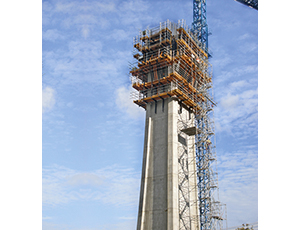
There's a flip side to the success story of booming construction in emerging markets such as India. At the moment, construction is the most dangerous industry in India, recording the world's highest accident rate among workers. Yet while construction labor accounts for just 7.5% of India's workforce, it suffers 16.4% of fatal occupational accidents, according to government data.
Risky Business
Recent fatalities at Metro Rail sites in Chennai and Mumbai have turned the spotlight on safety. Legislative measures to protect workers include the Building and Other Construction Workers Act, 1996; the Building and Other Construction Workers Central Rules, 1998; and the Workmen's Compensation Act, as well as the creation of the Welfare Board, notes R.K. Elangovan, director-in-charge of the Regional Labor Institute, Chennai.
Even so, indifference persists over preventive safety. Construction sites in India typically employ a huge, transient contractual labor pool. Employees have less shared history, and contractors tend to invest fewer resources into their safety, says Raja Prasad, safety head of the National Institute of Construction Management and Research, Hyderabad. Even if contractors do invest more, "the work is constantly changing and risks are higher," points out S. Sathyanarayana, head of environment, safety and health for L&T Construction's infrastructure group.
At Metro Rail sites, underground conditions, traffic disturbances, a paucity of space, untimely working hours, deadline pressure and, rarely, equipment failure and negligence are major risk factors, says Shankar N. Srivastava, director at Engineer Pro Consultants. In mining environments and other difficult underground work, uncertain geology accentuates these challenges. All major activities, from excavation and blasting to welding and structural erection, require stringent safety efforts, adds R. N. Tripathy, head of EHS at L&T Construction's materials-handling group.
Safety Check
While Prasad calls for "a new proactive paradigm to measure safety performance of sites" before incidents occur, Madan Kulkarni, director of the National Safety Council of India, emphasizes training as key.
For instance, B.E. Billimoria & Co. Ltd. requires routine checks conducted by designated safety officers, says Harshal Hirde, assistant general manager of corporate safety. Additionally, C&C Constructions Ltd. prepares customized safety manuals for each project, according to P.K. Aggarwal, chief general manager of buildings. "We establish accountability for each provision. Otherwise, everyone's responsibility becomes nobody's responsibility," he says.
"Safety induction for staff on-site, the use of personal safety equipment and avoidance of short-cut procedures are essentials," adds Pankaj Agarwal, president of EPC projects for GVK. "Also, tool-box meetings establish dos and don'ts for new activities."
Cost of Avoidance
The cost of safety can be difficult to measure, but it pales in comparison to the cost of accidents, experts say. The decision to be proactive should be part of any good business plan, they contend.
"Accident rates depend on the safety culture of the organization," explains Kumar Shailendra, chief EHS manager of power transmission and distribution projects for L&T Construction.
"Companies must realize that delays and expenses following an accident are usually much higher than the original cost of implementing safety standards," adds Paul Grant, head of scaffolding and access at HIPL. "Productivity and safety go hand in hand."
Aggarwal sees proactive safety measures as a time-saving investment that eliminates interruptions and reduces payouts to victims, escalation payouts because of delays and damage to assets.

Post a comment to this article
Report Abusive Comment